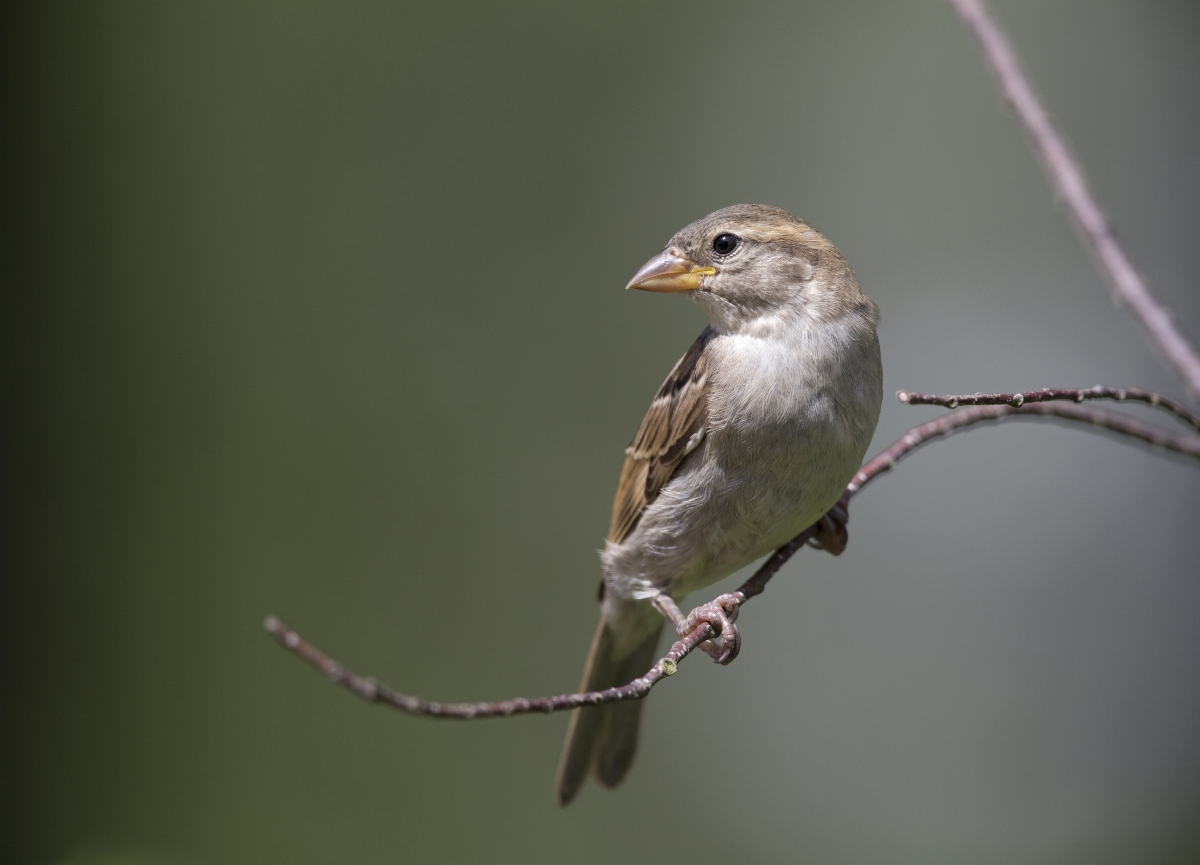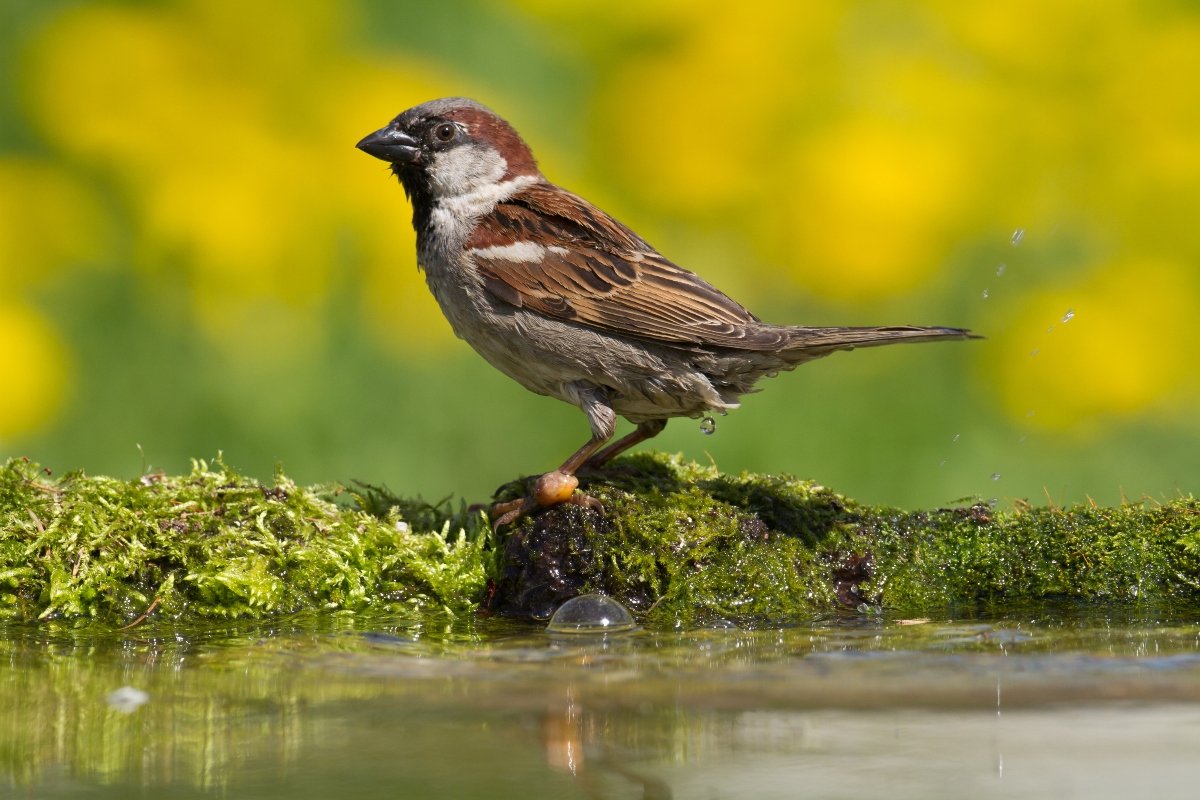The House Sparrow, bearing the scientific name Passer domesticus, is arguably one of the most widespread and recognized birds across the globe. This small bird, with its chirpy demeanor and remarkable adaptability, has made its presence known from countryside meadows to bustling city streets.

Typically measuring between 14-18 cm (5.5-7 inches) in length, the House Sparrow sports a robust body. The males are easily distinguishable with their warm brown and grey plumage, bold black bib, and a distinguishing grey crown. Females, on the other hand, are dressed in more muted, earthy tones, lacking the striking patterns seen in the males.
Originally native to the Mediterranean and parts of Asia, the House Sparrow has now colonized almost every continent, courtesy of human expansion. As humans built towns and cities, the sparrows followed, finding abundant food and nesting sites in urban landscapes.
Their diet is predominantly seeds, but they are not averse to munching on insects, fruits, and even scraps of human food. This flexible diet has been a cornerstone of their success in various environments. Their foraging nature often leads them to congregate around cafes, parks, and gardens where food is in plentiful supply.

Social creatures by nature, House Sparrows are often seen in noisy flocks, hopping around and chirping animatedly. They nest in a variety of places, from tree branches to vents and eaves of buildings. Their nests, often a messy collection of twigs, feathers, and leaves, may house 3-7 eggs, and it’s not uncommon to see both parents involved in feeding and nurturing the young.
While House Sparrows are widespread, they are not immune to challenges. In recent decades, there has been a noticeable decline in their numbers in certain regions. Urbanization, pollution, loss of nesting habitats, and changes in farming practices have contributed to this decrease, ringing alarm bells for conservationists.
The House Sparrow stands as a symbol of nature’s resilience and adaptability. Their consistent presence in our daily lives—be it the melodious chirping that greets us in the morning or their playful antics around public eateries—makes them a cherished member of the urban ecosystem. Their story serves as a reminder of the profound ways in which humans and nature are intertwined and emphasizes the need for harmonious coexistence.